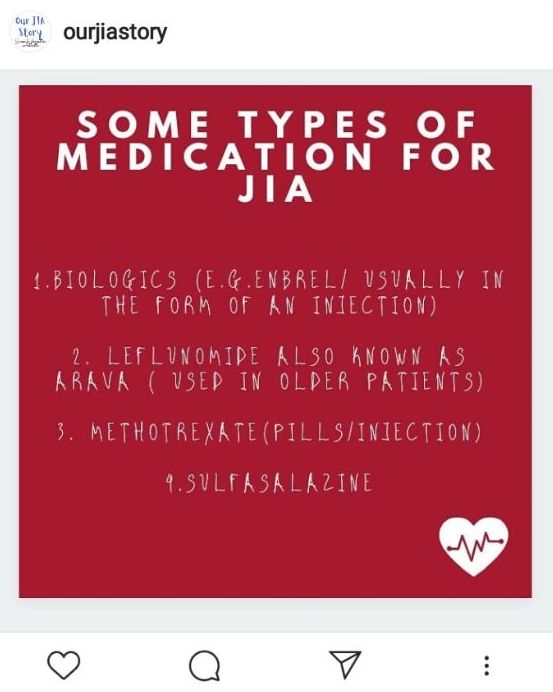Just a few years ago, Jia Ying had to deal with excruciating pain every morning.
“I [couldn’t] even walk to the bathroom normally,” the 20-year-old said as she recalled her worst relapse of Juvenile Idiopathic Arthritis (JIA).
“I would put my office chair beside my bed the night before, and when I woke up in the morning I had to push the chair to walk to the toilet. Even with the office chair I couldn’t really walk comfortably.”

Photo Credit: Jia Ying
JIA is an autoimmune disease that affects children under the age of 16, according to Professor Tash Arkachaisri, associate professor at Duke-NUS Graduate Medical School and Yong Loo Lin College of Medicine. It is also a lesser known type of arthritis, which usually affects older adults.
Jia Ying was first diagnosed with JIA at nine years old. At first, she noticed swelling on her ankles. Then, she started developing a limp as it’s too painful to walk with her swollen ankles.
“It took quite a while [to get diagnosed] because I went to several hospitals,” she recalls.
She was given injections and oral tablets to reduce the inflammation in her joints. Luckily for her, she responded well to the treatment and was even able to take part in most physical education (PE) classes in school until she was 15.
Coping with Relapse
During the 4-year-long relapse, Jia Ying was in constant pain. Her body was developing antibodies against the medication she was taking at that time, prednisone, which is a type of steroids used to help arthritis patients reduce swelling in their inflamed joints.
For Jia Ying, the pain in her elbows were manageable. It was her knees and ankles that hurt really badly. She had to skip some classes because she couldn’t focus on her studies while coping with the pain.
It was at this point that she decided she would not go back to secondary school the following year to sit the O-level exams.
“At the end of Secondary 4 I knew that my JIA was going to get worse, like an intuition. I was already bad at Math, and with this illness I felt like I wouldn’t be able to fully [immerse] myself in learning. Going to Secondary 5 would have been tougher and I wouldn’t be able to learn as much.”
She graduated with N-levels that year and moved on to study in ITE.
“I didn’t know what to choose [to study] so I anyhow chose Banking and Finance!” she joked. “But even in ITE it was quite tough, especially during accounting classes because I wasn’t very involved in it.”
Jia Ying’s condition improved after she turned 19. She still walks with a limp, but only her right ankle is swollen.
@OurJIAStory
Jia Ying is the first in her family to have this illness. In fact, no one in her family even has a known history of any other forms of arthritis. Nevertheless, her family has been very supportive, accompanying her to her medical appointments and just being there for her.
Despite the love from her friends and family, not knowing anyone else with JIA has made Jia Ying feel a little isolated.

Photo Credit: @ourJIAstory on Instagram
Earlier in July, Jia Ying had sprained her leg. Reminded of the pain she would feel in her lower body when her joints were inflamed, she decided to launch @ourJIAstory on Instagram to reach out to other patients with JIA in Singapore.
“At that time, I tried to find support [for JIA patients] on Facebook,” she explained. “I found a group, but they were based in the UK and couldn’t provide helplines and resources for people outside of their country.”
As such, she began running her Instagram account with the goal of being one platform people with JIA can turn to for JIA resources, motivational quotes or just somebody to talk to. She also shares her own experiences to give others more insights on how coping with JIA is like.

Photo Credit: @ourJIAstory on Instagram

Photo Credit: @ourJIAstory on Instagram
Over the past few weeks, @ourJIAstory has helped Jia Ying connect with several people with JIA and other forms of arthritis, most of whom are from other countries like Canada.
“It’s good la, I’ve talked to people from other countries and they’ve shared their [JIA] stories with me and we’ve exchanged our [JIA] experiences like that.”
A Long-Term Battle
With no existing cure for JIA, patients like Jia Ying have to cope with this illness for the long run. Currently, medication, physiotherapy and surgery are the main options for patients who want to ease their pain.
Some of these medications have side effects. For Jia Ying, her previous medications have led to the loss in bone density and acne flare-ups. Now she’s coping with hair loss from taking leflunomide.

Photo Credit: @ourJIAstory on Instagram
Jia Ying’s diet also has to be adjusted. She’s been advised by her doctors to avoid cold foods and drinks, peanuts and preserved meats like ham and sausages.
Aspirations
Over the years, Jia Ying has become a little introverted.
“Growing up, I was very self-conscious about the way I [walked with] a bit of a limp. There was a period of time when I had [very bad] acne and that made me conscious too.”
She added that back in school, she was exempted from her PE classes during her JIA relapse. During this time, some classmates had accused her of faking the illness just to get herself out of PE classes.
But such episodes have not stopped her from looking at life positively.
“I’ve learnt to appreciate being able to walk without pain,” she reflected. “Walking without pain is a luxury, and a lot of people don’t get that too. I just [hope] that my flares up don’t really resurface in the future.”
According to Prof Tash, it is estimated that around 40% of JIA patients will be off medication around 8 to 10 years after their diagnosis. Many JIA patients are able to live a normal life after years of therapy and medication.
While the worst may be over for Jia Ying, she hopes to continue reaching out to other JIA patients here. She recently got to know a few of them through the National Arthritis Foundation, and attended their online live charity show, A Night with Kumar and Friends.
She hopes to be able to continue raising awareness and rallying support for people with JIA and arthritis with @OurJIAStory.
Edited by: Christel Yan
Proofread by: Coen Sim
